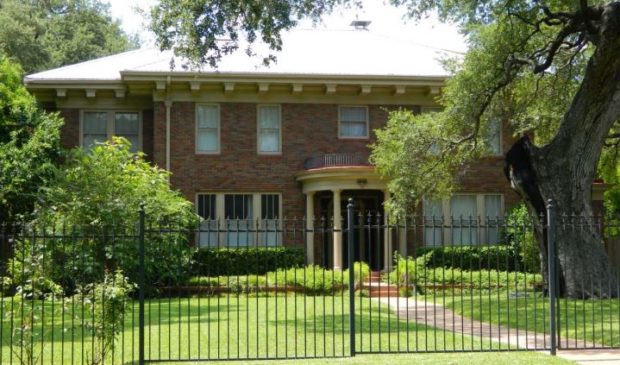Council denies West Austin historic zoning
Wednesday, October 10, 2018 by
Jo Clifton A divided City Council declined last week to zone a West Austin house as historic, but the owners have agreed to renovate the house in Italian Renaissance Revival style, so that it satisfies them as well as the neighborhood and the city’s historic preservation officer.
Jay Riskind, who with his wife owns the Bryson-Krueger-Critz House at 1602 West Lynn St., had a valid petition against the historic zoning designation. Their neighbors had a separate valid petition against the historic zoning, an unusual circumstance, particularly in a historic district like this one.
Because of the valid petitions, it would have taken nine affirmative votes to move forward with finally designating the house as historic. To move forward on second reading would have required six votes. But only Mayor Steve Adler, Mayor Pro Tem Kathie Tovo, and Council members Alison Alter and Leslie Pool voted in favor of the historic designation.
The house, which was built in 1923, is listed as a contributing structure in the Old West Austin National Register District. George Bryson, the original owner, was a cotton merchant, but perhaps more importantly, Texas Supreme Court Justice Richard Critz lived in the house starting around 1940.
The Riskinds wanted to renovate the house and enlarge it to accommodate the large family they plan to have. But when they went before a committee of the Historic Landmark Commission to discuss their plans, commissioners were alarmed by the changes. Subsequently, when a demolition permit for the renovation came before the full commission, commissioners asked staff to start the process to designate the home as a historic landmark.
Historic Preservation Officer Steve Sadowsky told Council at the September hearing that the changes the Riskinds wanted to make at that time would eliminate the house as a contributing structure in the historic district. The changes would also prevent any future owner from landmarking the house, he said.
However, after that meeting, the Riskinds hired one of the South’s most noted architects, and they now plan to incorporate the two key design elements most important to historic preservationists, namely symmetrical massing and limiting the height to two stories, into their plans for the home, according to statements from Jay Riskind and his agent, Glen Coleman.
The architect, Bobby McAlpine, wrote to Council promising that his firm would provide “an appropriate design that should contribute even more than the existing portrayal of Italian Renaissance Revival architecture.” During the first hearing on the matter in September, Coleman brought an architectural expert to tell Council that the house was not a good example of the Italian Renaissance Revival style and should not be landmarked.
Once the changes are made, however, McAlpine and his clients assured Sadowsky that they would have a structure appropriate for the historic district.
After the homeowners hired McAlpine, Sadowsky told Council he was willing to withdraw the request to rezone the house historic, stressing that he still considered the house worthy of the historic designation but noting that there would not be enough votes.
Still, Tovo and Pool in particular wanted to press forward with the historic designation, even though Council Member Ann Kitchen – a critical vote – said she would not be voting for the designation this time.
Coleman told Council, “We will not be satisfied to pause here for months and months and haggle about the design. We’re making you an offer to step closer to you. We’re not conceding that the house is historic, but we want to work with the concerns expressed by the mayor pro tem’s office and expressed by the Historic Landmark Commission, and that’s where we are. We hope that you will vote this down and let us proceed or just not entertain the motion and let us move forward.”
Now, if all goes as planned, McAlpine will design the renovation and consult with Sadowsky before moving forward with construction. The city will not be allowed to attempt to zone the home historic again for another year.
This story has been changed to clarify the commission process that initiated the historic landmark case. Photo courtesy of the city of Austin.
The Austin Monitor’s work is made possible by donations from the community. Though our reporting covers donors from time to time, we are careful to keep business and editorial efforts separate while maintaining transparency. A complete list of donors is available here, and our code of ethics is explained here.
You're a community leader
And we’re honored you look to us for serious, in-depth news. You know a strong community needs local and dedicated watchdog reporting. We’re here for you and that won’t change. Now will you take the powerful next step and support our nonprofit news organization?










